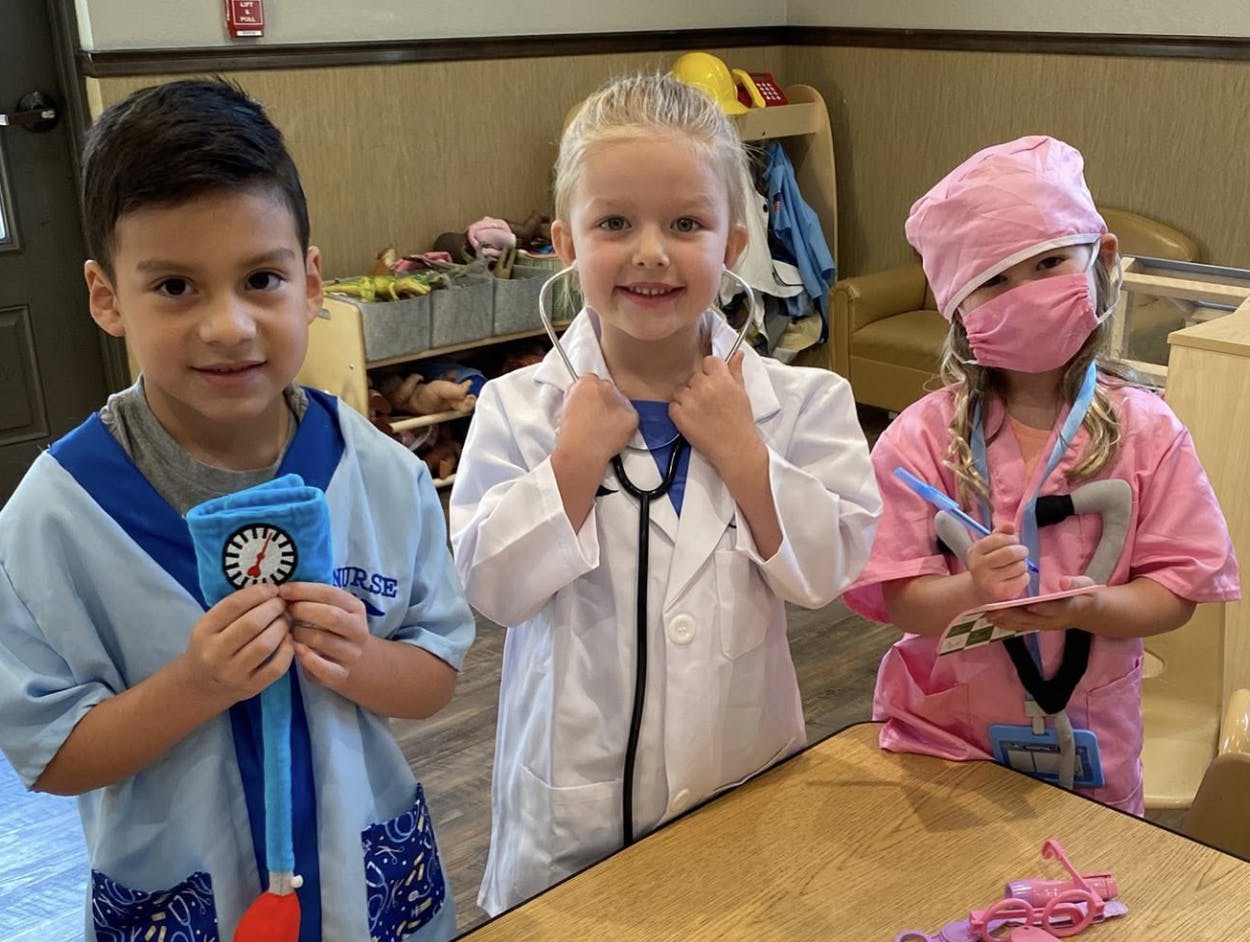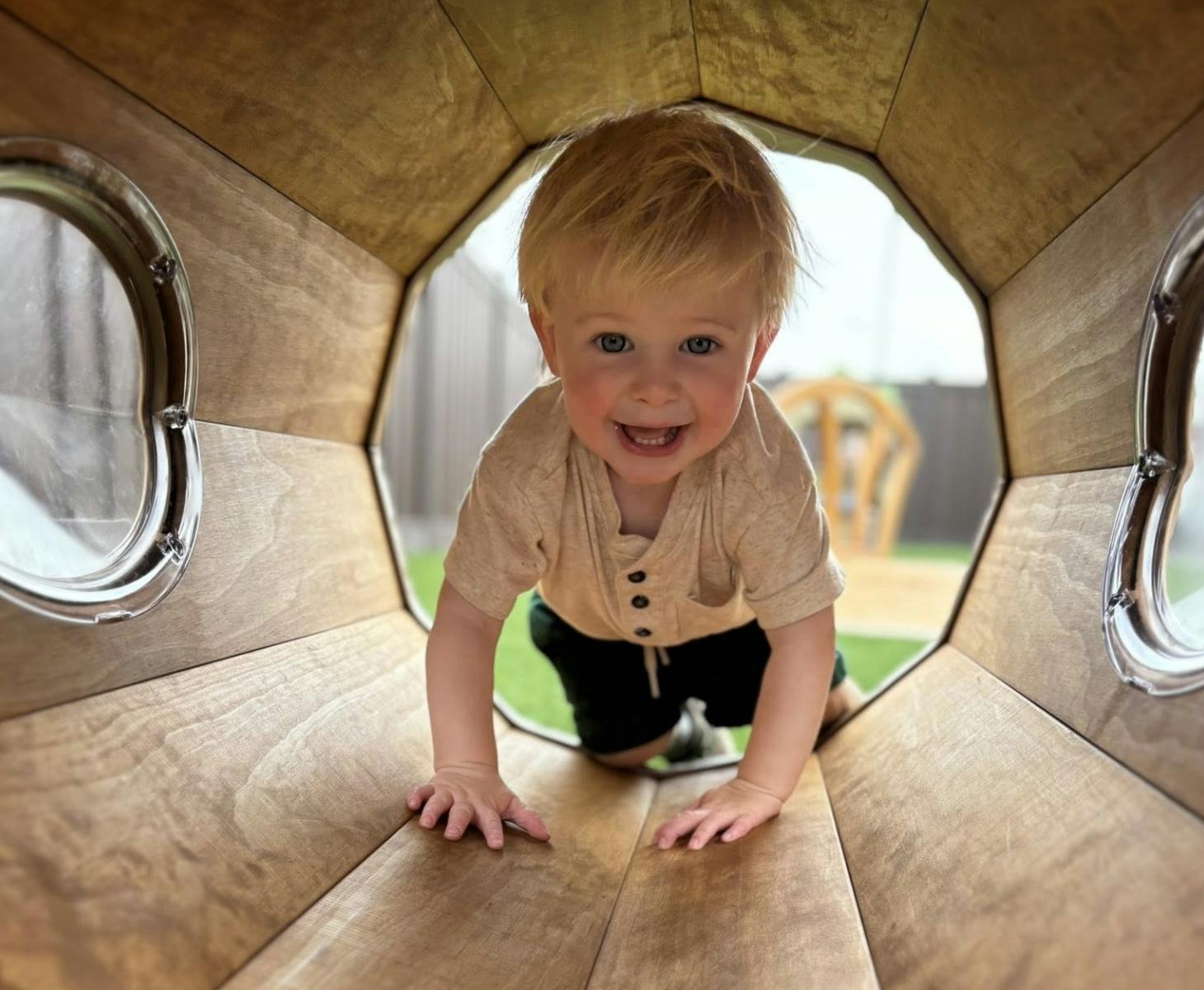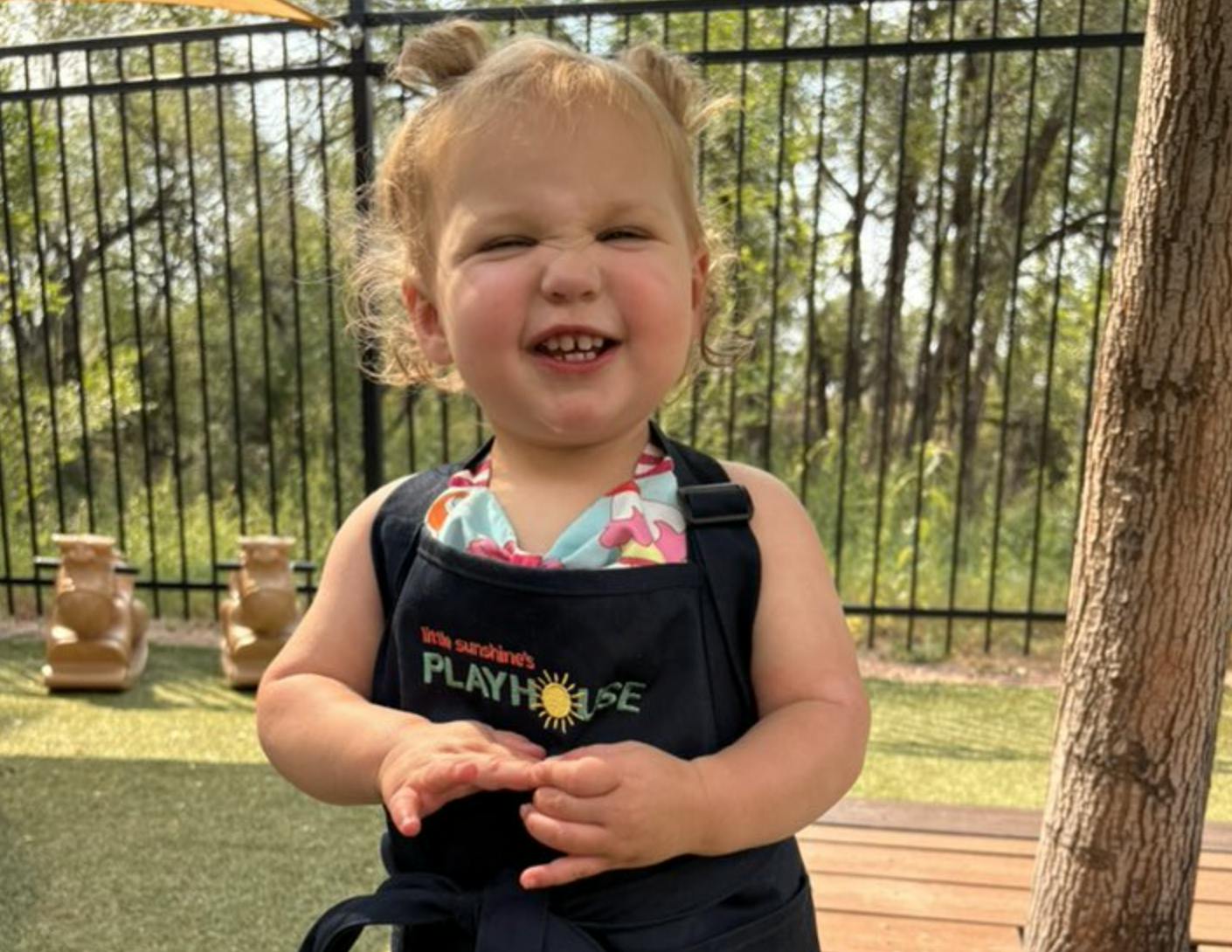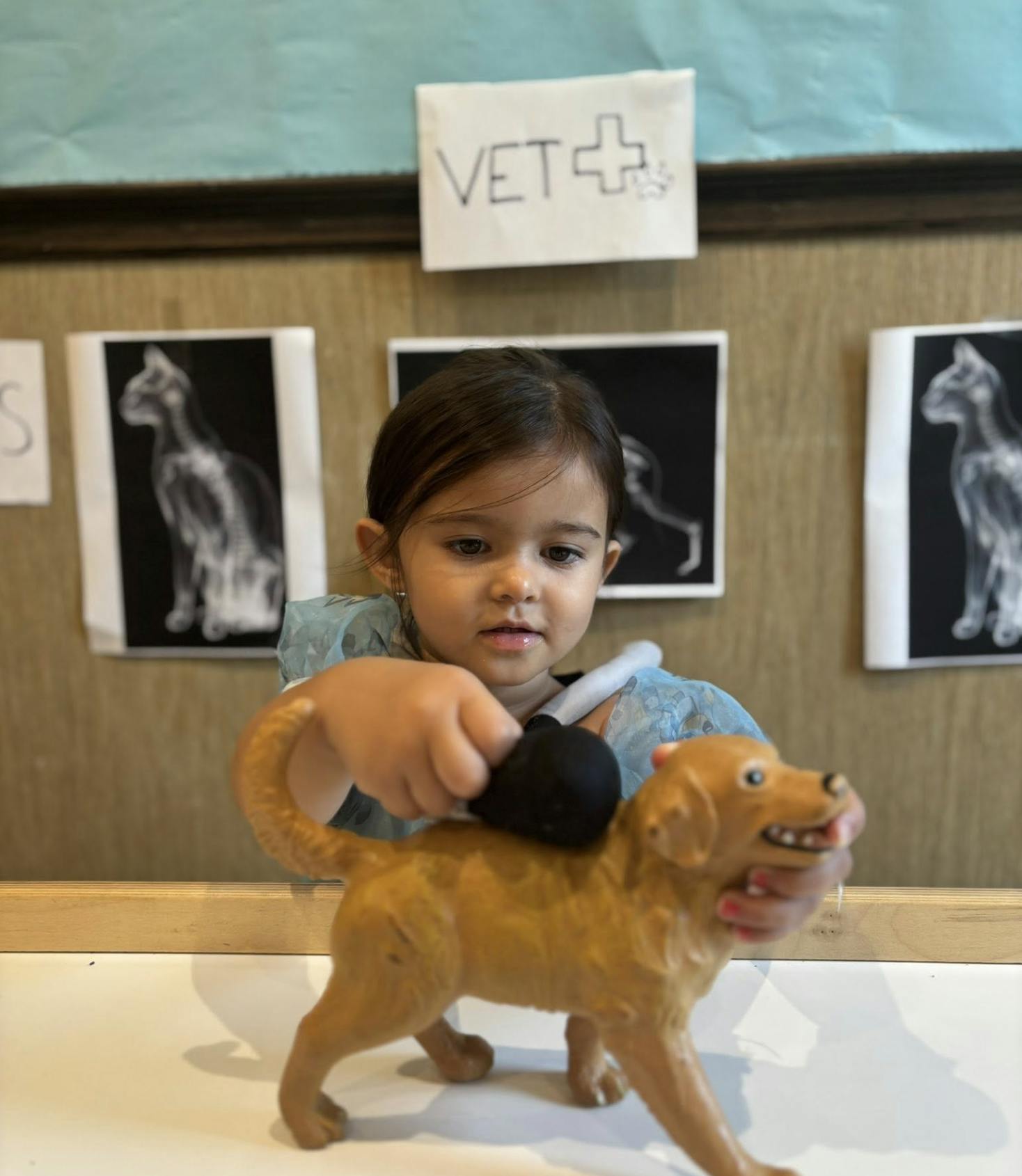
September 15, 2025
10 Misconceptions About Play-Based Learning
Play-based learning sometimes gets brushed off as “just play,” but decades of child development research tell us the opposite. Play is how children learn best. It’s where they experiment, solve problems, and discover how the world works. Little Sunshine’s Playhouse, as a reggio emilia-inspired school, believes wholeheartedly in preparing little minds for a life full of learning through play. We are lucky enough to witness the impact of this learning style in our classrooms every day.
Still, parents often hear myths that make them second-guess whether play-based classrooms really prepare children for success. Let’s bust some of the most common misconceptions.
Myth 1: “Play-based learning isn’t academic.”
This is probably the most common myth, and it couldn’t be further from the truth. When children stack blocks, they’re working with geometry and balance. When they draw a picture and tell you about it, they’re developing pre-literacy skills. Even dramatic play — like setting up a “restaurant” — builds math skills (taking orders, counting money), vocabulary, and critical thinking.
The difference is that instead of drilling facts, children apply concepts naturally. That makes the learning more meaningful, and more likely to stick.
Myth 2: “It’s unstructured chaos.”
Parents sometimes imagine a play-based or child-led classroom as kids running wild while teachers sip coffee in the corner. In reality, these classrooms are carefully designed. Teachers set up materials and environments that spark curiosity, then guide children toward deeper thinking with questions like, “What do you think will happen if…?” or “How could we make this tower stronger?”
The structure is there. It just looks different from traditional worksheets. It’s built into the environment, the teacher’s role, and the goals for the day.
Myth 3: “Kids won’t be ready for ‘real school.’”
A big worry for parents is that a play-based approach won’t prepare children for the academic rigor of elementary school. However, this study shows that children from play-based programs often enter kindergarten with better problem-solving skills, stronger emotional regulation, and more motivation to learn.
Why? Because they’ve learned how to think, not just what to memorize. A child who’s practiced working through problems in play will be better equipped to tackle math problems, reading comprehension, and group projects later on.
Myth 4: “Play is only for preschool.”
We sometimes assume play stops once children enter “real school.” But play is a lifelong learning tool. Older children engage in it through games, sports, music, and creative projects. Even adults “play” when brainstorming ideas, experimenting with new hobbies, or role-playing scenarios at work.
Play just evolves with age. The foundation built in early childhood — curiosity, creativity, resilience — continues to serve children as they move into more formal academics.
Myth 5: “Introverted kids don’t benefit.”
It’s easy to assume play-based learning only works for extroverted, outgoing children. But in fact, play is often where quieter children find their voice. An introverted child might not raise their hand in circle time but may come alive while building an elaborate block city or narrating a puppet show.
Play provides multiple entry points for children with different personalities, learning styles, and comfort levels. It’s inclusive by nature.
Myth 6: “They won’t learn discipline or responsibility.”
Some parents believe play-based and child-led classrooms don’t teach structure or accountability. But think about what happens during a game: children follow rules, take turns, and deal with the natural consequences of breaking them. In block play, they must share resources and clean up materials when they’re done.
These are the beginnings of responsibility, learned not by being told, but by experiencing. And those lessons stick.
Myth 7: “Teachers just sit back and watch.”
It may look like teachers are standing on the sidelines, but they’re actually highly engaged. A play-based teacher observes closely, notes patterns in a child’s learning, asks questions that push thinking further, and sometimes introduces new materials to spark deeper exploration.
This kind of teaching requires skill and attentiveness. Instead of delivering answers, teachers are cultivating curiosity, which is harder work than it might appear.
Myth 8: “Play is a waste of time.”
This misconception often comes from thinking that only direct instruction counts as learning. But for young children, play is the most efficient way to develop crucial skills. In play, children practice self-control, explore cause and effect, and experiment with new ideas.
Far from wasting time, play-based and child-led learning is the most developmentally appropriate use of time at this stage of life.
Myth 9: “It doesn’t prepare kids for the real world.”
Flashcards and memorization may help with short-term recall, but they don’t build the skills most valued in adulthood.
When children negotiate over who gets to be “captain” or figure out how to make a block tower stand taller, they’re rehearsing the same skills they’ll need in group projects, workplaces, and relationships later in life.
Myth 10: “Play-based learning is less effective than traditional teaching.”
The research says otherwise. Studies consistently show that play-based programs not only support academic readiness but also lead to stronger outcomes in social-emotional skills, attention, and long-term love of learning. In fact, the countries with the highest-performing school systems (like Finland) are famous for embracing play in early childhood.
So when someone tells you that play-based learning isn’t as effective, the science — and thousands of thriving children — prove them wrong.
Final Thoughts
Play-based learning isn’t fluff. It’s not chaos. And it’s certainly not “just play.” It’s how children learn to think, create, connect, and grow. When children are given the freedom to explore with the support of intentional teachers, they build a foundation that will carry them through school and life with confidence.
The next time you peek into a play-based and child-led classroom and see a group of children giggling over mud pies or building castles out of cardboard boxes, remember: you’re watching powerful learning in action. And they’re having fun while they do it.
If you’re interested in seeing the magic of a play-based preschool in action, schedule a private tour at a Little Sunshine’s Playhouse near you!
Explore more of our blogs!



